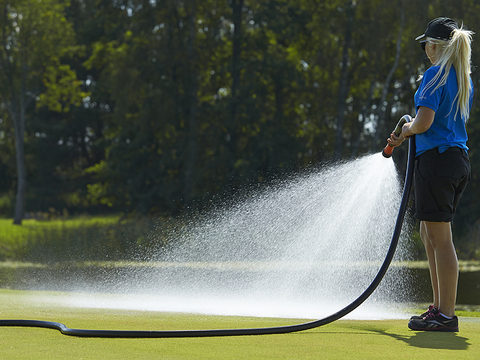See the footprint of summer stress on turf

When turf starts to wilt, it can be difficult to pinpoint the causes of stress, writes Syngenta Technical Manager, Glenn Kirby.
Where players’ footprints temporarily remain on the surface during hot weather, it’s often attributed to the onset of lack of moisture, but in reality could be heat stress.

|
Greenkeeper International InSight feature |
That has frequently been recorded in Ryder trials, where ‘footprinting’ was repeatedly seen on untreated turf in the heat of the day, but no sign on the treated – yet the soil moisture content was exactly the same throughout. That has been attributed to the impact of excess light on untreated plants, but with the same visual effect as moisture wilt.
And plants that are under drought or nutrient stress, for example, can also be more adversely affected by the effects of heat. All these factors around turf health and soil moisture are inextricably interrelated.
With an integrated approach to water management, easing off cutting height is a recognised way to reduce stress, cool surfaces and retain root mass over the summer.
However, under player pressure and demands for faster green speed, that can be a controversial call.
Trials and greenkeepers’ own experiences have repeatedly shown that regulating turf growth with Primo Maxx II programmes can maintain the same green speed throughout the day at four mm, compared to three mm morning cut when untreated.

In fact, STRI monitoring at The Open, has shown just slightly raising the cutting height significantly improved putting surface performance, with smoother ball roll. Furthermore, many find that with PGR use during the summer it is frequently possible to alternate days of cutting and rolling.
That can all help to reduce stress and enhance plant health, which will help survival and playing surface quality through trough summer conditions. New research in the Nordics has shown that stronger plants through the summer do have a real advantage going into the winter, which will be investigated in a future issue of InSight.
Read more from the Greenkeeper International InSight research review into water management:










